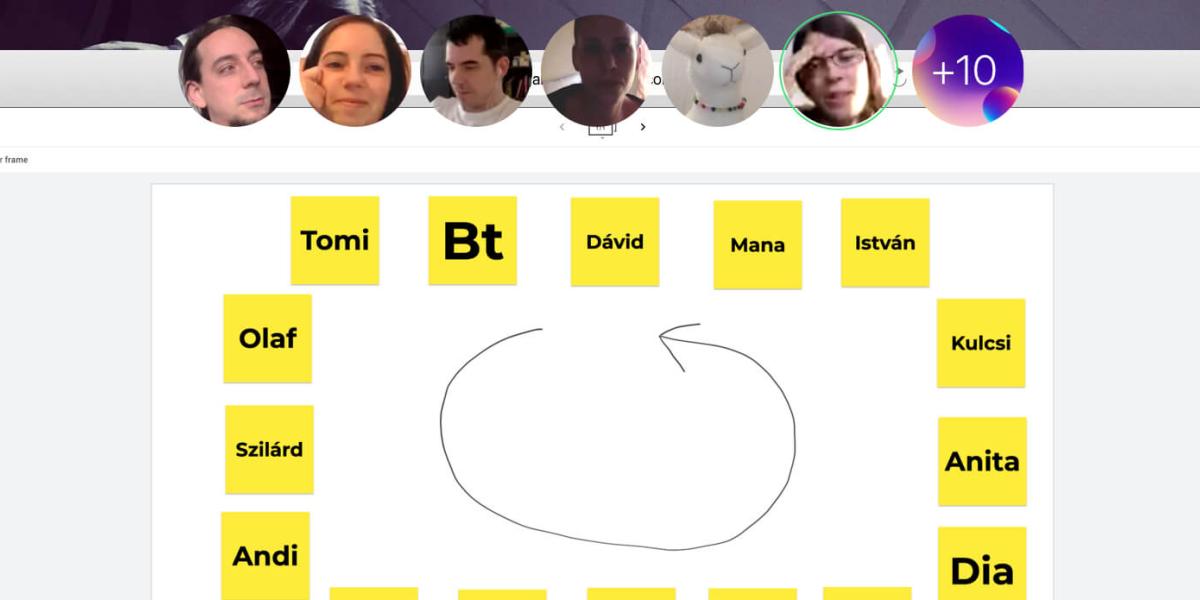We were familiar with the concept of the home office. Some of us have only used it once, when the gas meter reader came during the usual 8am - 4pm predetermined time slot.
Integral Vision
We are no strangers to the concept of the home office. Some people only used it once or twice when the gas meter reader came during the usual 8 am - 4 pm predetermined time slot. Others regularly worked from home 1 or 2 days a week.
We first agreed only that anyone who wanted to could work from home for more extended periods in early March. Then, after a few days, we decided it would be better to switch to working entirely from home. Fortunately, there is no technical barrier to this here. We also have established communication channels online, everyone has a laptop to take home, so telecommuting was relatively easy to implement.
The only big question mark left is the demo day. The usual program is to first retrospect in a small group, talk about the sprint, what it was like for everyone, the difficulties, what went well, what should be changed. Afterward, the projects are finalized and planned according to a pre-planned schedule in small groups in the morning. Then we have lunch together, followed by the company retreat. Seventeen of us in the blue room discuss the more significant and more minor issues that affect us, from our shared values to loading the dishwasher. Transparently, democratically. It's where we make and revise the most important rules of our day-to-day operations, meet new people and say goodbye to those who leave. After the joint retro, we'll have the demo, where we'll give each other a glimpse of the sprint's most interesting mistakes and best solutions, a forum to learn from each other. And we will end the day with resource planning, where everyone will make their commitments for the next sprint.
When it became apparent that we would be forced to hold the demo day in the online space, I committed to looking for good practices and making suggestions to the team on how we could try to do this seemingly impossible task painlessly and efficiently. Two weeks ago, I could find very few articles, mainly in English, on moderating large group meetings online; today, I'm sure I could find more. :) From our own experience and from what we have read so far, we have come to the following:
If few people are in a meeting, it adds to the personal touch if you can see each other while talking. Then you can see that you are listening to each other, reacting to each other, feeling more connected.
When sitting in a room, we can often tell who is about to speak by their body language, for example, who has taken a deep breath, announced themselves, leaned forward. We don't see this online, so either everyone is silent for someone else to start speaking, or several people start talking simultaneously. Therefore, even in meetings with as few as 4-5 people, it can be helpful to make sure that you pass the floor to someone else or appoint a moderator to address the next person when you have finished speaking. We use these methods on our daily standups, working on small retrospectives.
For live meetings with more than 4-5 participants, it is often necessary to moderate, and participants can indicate in advance if they wish to contribute to a topic. Fortunately, sign-up is possible on zoom and Ji.tsi, but I understand that teams are already working. Hangouts don't have this feature (yet), but there is a built-in chat: we used it to sign up for our larger meetings. The moderator would see who had indicated in conversation that they wanted to speak and address the participants.
I think many of us have now experienced the annoying drilling, scurrying, and microphone-picking-rattling-whirring-whirring in the background that is so unpleasant and distracting. In a meeting of 17 people, all it would take is for one of the kids to start arguing in the background or one of us to begin making thoughtless love to the microphone, and the whole meeting would become incomprehensible and annoying. So we've been pretty strict that only the speaking people (and the moderator, of course) are muted in larger meetings.
This is one of the most important requirements for online meetings and valuable in general. There is more room for spontaneity; I can see from the participants if they are open to adding a new topic or figuring out the order of issues together. This would be not easy online, and there is less information available about whether we are moving in a direction that is acceptable to everyone. If we write down in advance what topics we want to cover, give background material, describe what we expect from others (approval, opinions, questions, etc.), there is time to find out in advance if something needs to be changed. You can tell us in advance if there is a problem, you can ask back to clarify. For example, I can point out that I was unnecessarily invited to that meeting because I didn't understand the subject at all.
Our experience with online meetings so far has been positive. We had some initial difficulties, sometimes not allowing enough time for participants to ask questions related to the topics, and it was odd that when someone told a joke, we didn't hear the usual laughter. Of course, there are complicated things to implement online, such as a shared laugh during the demo, asking for a slice of someone's pizza at lunch, or being able to gauge who is in a slightly worse mood, who to ask what's new. Maybe as time goes on, we'll gain experience in these things too.
Share with your friends!